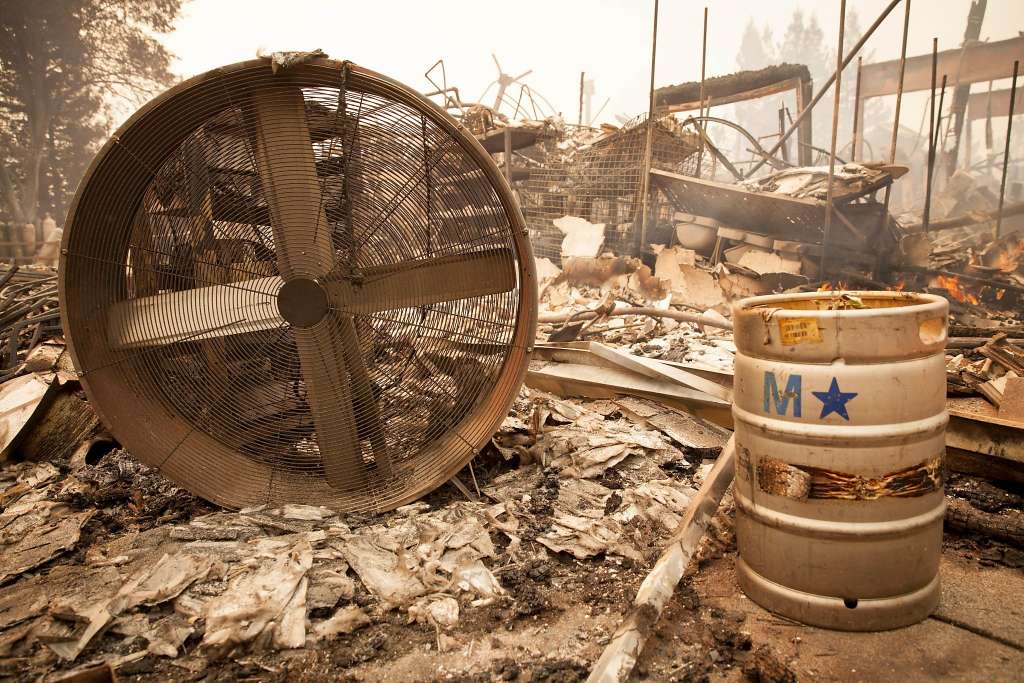
I t may seem like closing the barn door after the horse is gone, but now is a good time to consider what you can do to be better prepared for an unexpected disaster.
I know our friends, colleagues and clients in Santa Rosa and the wine country of Sonoma and Napa continue to suffer immeasurable pain and loss from the tragedy and devastation brought about by the raging fires in Northern California.
Our hearts and prayers go out to all of them, with best wishes for their personal safety and complete recovery from this unprecedented disaster.
Are You Ready?
Apart from calls to friends and family to make sure they’re safe, out of harm’s way and, hopefully, not facing property loss, the first thing I’ve heard from people everywhere is:
“Am I prepared if this happens to me?”
The First Thing That Comes to Mind
If you’ve been spared the agony of these firestorms, consider getting a head start to be better prepared when other unexpected events come your way.
The first two items on my list are NOT the most important, but I’ve listed them at the top because they’re likely to take much longer than the entire rest of the list.
Of course, the physical safety, health and sustenance of your family is the absolute #1 Priority, and the 10 Steps shown below will help you get there.
But over these last few days, as I’ve talked to friends around the country and contemplated my own preparation, I’m reminded of the irreplaceable personal effects that so many families were unable to save during the recent firestorm.
Most everyone mentioned family photos, mementos, yearbooks, jewelry and countless other personal items that couldn’t be rescued because they needed to evacuate immediately and without warning.
Preserve Your Treasured Memories and Documents
Once you and your loved ones are safe and assured of enough water, food and medical attention, these issues may become the most painful of all if you’re facing a devastating loss and could have done more to save your treasured memories:
1. Make sure your photos and as many documents and important papers as possible have been scanned and uploaded to at least one cloud service, if not more.
For me, this is at the top of the list because it’s those memories, family photos and historical documents like diplomas, birth and wedding certificates, etc., that are irreplaceable unless you have taken the steps to preserve them OUTSIDE the boundaries of your home.
It will also take some time to collect these items and scan them into a retrievable form. There are also outside services you can choose to do this for you.
Even if you don’t choose a cloud service, get these treasures into digital form and create a backup disk that’s in your “go bag” or stored outside of the boundary of your home.
2. Take photos of jewelry and other valuable items you may not be able to rescue.
This will dramatically improve the strength of your insurance claim and serve as an invaluable record of what you own and what you may have lost
10 Things You’re Not Doing To Prepare For Natural Disasters
In the 10 Things You’re Not Doing To Prepare For Natural Disasters, the Weather Channel ticks off these 10 items that should be at the core of your disaster preparation plan:
- You’re Not Storing Enough Food
- You’re Not Setting Aside Some Cash
- You Don’t Have an Out-of-area Emergency Contact
- You Haven’t Stored Enough Water
- You Don’t Have a Plan Ready For Your Entire Family
- You Haven’t Figured Out Where You’ll Go (That Allows Pets)
- Your First Aid Kit Is Incomplete (or Nonexistent)
- You Aren’t Trained in CPR or First Aid
- You’re Not Practicing For the Disaster
- Your Car Isn’t In Tip-top Condition
The Power of After Action Reviews
Finally, in The 4 Key Principles of Powerful After Action Reviews, I’ve outlined the critical steps you can take AFTER any project or event to assess what went right and what didn’t. It’s a proven way to learn from what’s happened and to avoid the same problems going forward.
The AAR is a powerful and compelling tool, inexpensive to implement and simple to apply with not much more than keen observation and a systematic process. While it’s fresh in your mind … and real to your family, friends and neighbors … set aside some time for an After Action Review so you’ll be as prepared as possible when tragedy strikes.
Don’t Hesitate. Do It Now.
The firestorms raging throughout California and ravaging the wine country of Sonoma and Napa are a grim reminder of how unprepared we are for unexpected tragedy.
If it stimulates you to take action to be better prepared tomorrow, it may be the silver lining in the cloud.
You should start today.


